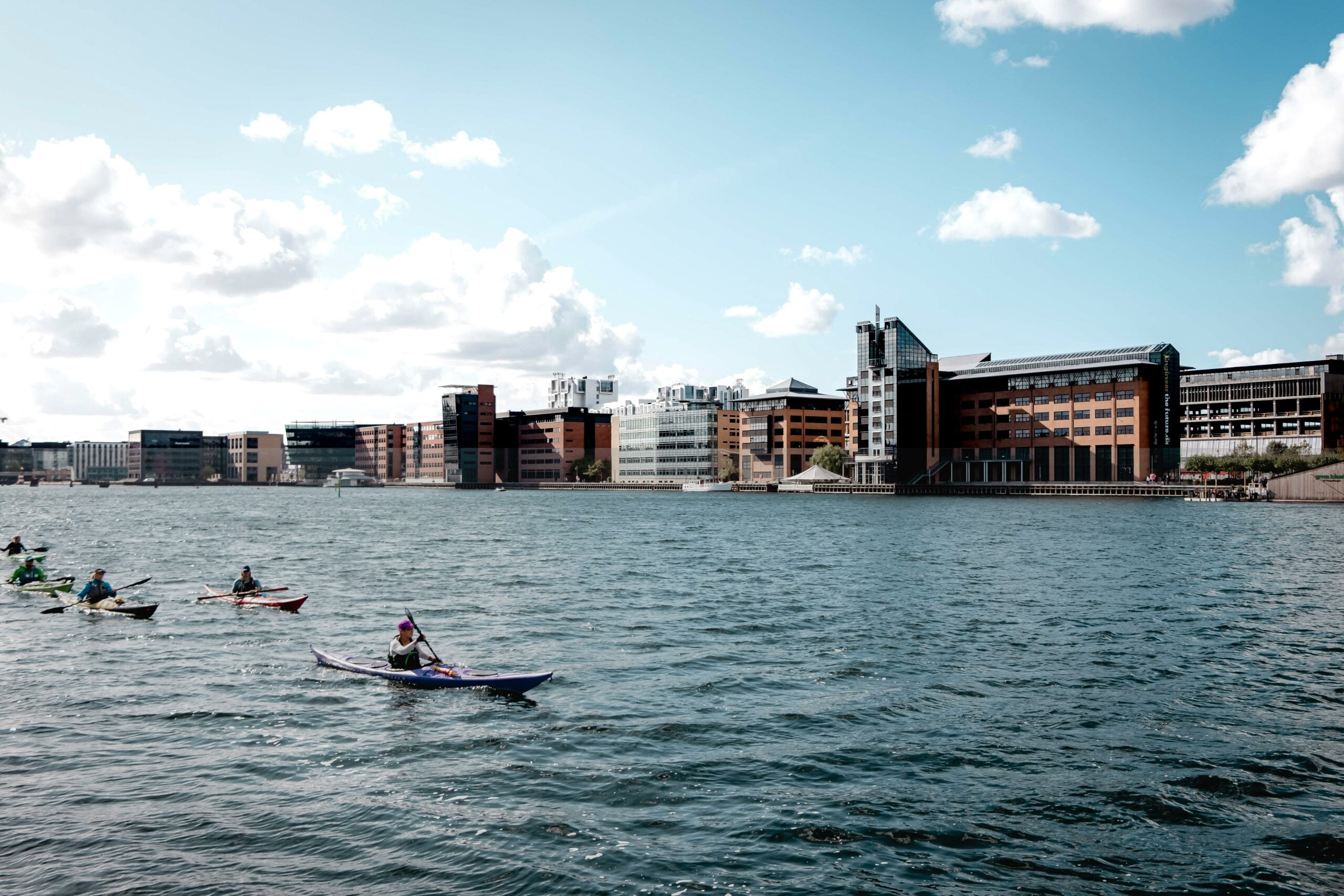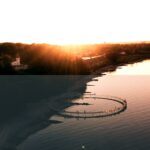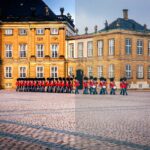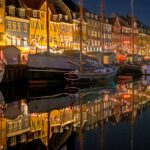Are you ready to embark on a fascinating journey through the enchanting land of Denmark? Join me as we uncover the hidden gems and unveil the captivating tales that make this country a true Scandinavian treasure. In this article, we will dive into the rich history, vibrant cities, and cultural traditions that define Denmark. Buckle up and get ready to be amazed as we unveil 40 intriguing facts about this extraordinary nation, leaving no stone unturned in our quest for discovery. From historical landmarks to mouthwatering cuisine, and from contemporary design to dynamic traditions, Denmark holds a plethora of surprises that will captivate your imagination and leave you craving for more. So, without further ado, let’s embark on this exciting adventure and unlock the secrets of Denmark!
40 Facts About Denmark
Denmark, officially known as the Kingdom of Denmark, is a fascinating country with a rich history and vibrant cultural traditions. With a population of approximately 5,707,251, Denmark covers a total area of 43,560 square kilometers. The name “Denmark” itself most likely means “Land of the Danes.” Let’s dive deeper into the intriguing aspects of this Scandinavian gem.
Historical Heritage: From Vikings to Monarchy
Viking Roots: Denmark’s history is intertwined with the legendary Vikings, who were skilled seafarers and fearsome warriors. The Viking Age, spanning from the 8th to the 11th centuries, shaped Denmark’s early history.
Join me on a journey back in time to the era of the Vikings, where tales of bravery and exploration abound.
Monarchic Tradition: Denmark has a tradition of monarchy that dates back over a thousand years. The current monarch, Queen Margrethe II, has been reigning since 1972, making her the longest-serving queen in Danish history.
Discover how the Danish monarchy has influenced the nation’s culture and society throughout the centuries.
Copenhagen: The Charming Capital
The Heart of Denmark: Copenhagen, located on the island of Zealand, is the capital city of Denmark. Known for its vibrant atmosphere and stunning architecture, Copenhagen offers a mix of historical landmarks and modern design.
Let’s explore the charming streets of Copenhagen, where centuries-old buildings coexist harmoniously with cutting-edge urban landscapes.
Tivoli Gardens: One of Copenhagen’s must-visit attractions is Tivoli Gardens, an enchanting amusement park and pleasure garden. Dating back to 1843, it is the second-oldest operating amusement park in the world.
Step into a fairytale as you wander through the magical Tivoli Gardens, where thrilling rides, lush gardens, and live entertainment create a truly unforgettable experience.
Cultural Traditions: Hygge and Danish Cuisine
Hygge: Denmark is famous for its concept of “Hygge” (pronounced hoo-gah), which represents a feeling of coziness, contentment, and well-being. It encompasses the Danish way of life, emphasizing relaxation, togetherness, and taking pleasure in simple moments.
Immerse yourself in the comfort of Hygge, as we unravel the secrets to finding warmth and happiness in the little things that make life worthwhile.
Danish Design: Denmark is renowned for its design heritage, characterized by simplicity, functionality, and minimalism. Influential Danish designers have made significant contributions to furniture, architecture, and fashion.
Explore the world of Danish design, where clean lines, timeless aesthetics, and practicality converge to create harmonious and functional spaces.
Natural Beauty: Pristine Landscapes and Breathtaking Coasts
Nordic Landscapes: Denmark’s landscapes are diverse, ranging from picturesque countryside dotted with farms to rolling hills and pristine forests. The country’s natural beauty provides a serene backdrop for outdoor enthusiasts and nature lovers.
Immerse yourself in Denmark’s scenic wonders, where lush greenery, tranquil lakes, and captivating countryside rejuvenate the soul.
Coastal Delights: With a coastline spanning around 7,314 kilometers, Denmark boasts numerous scenic beaches, charming coastal towns, and breathtaking cliffs. It’s a paradise for those seeking sea views and coastal adventures.
Indulge in the allure of Denmark’s coastline, where sandy beaches, rugged cliffs, and picturesque seaside villages invite you to unwind and embrace the maritime charm.
Unique Traditions: Midsummer Celebrations and Danish New Year
Midsummer Festivities: Danish Midsummer, also known as Sankt Hans Aften, is celebrated on the evening of June 23rd. Bonfires are lit, and people gather to enjoy music, food, and drink, commemorating the summer solstice.
Experience the enchantment of Danish Midsummer, where bonfires illuminate the night sky and merry celebrations bring communities together in joy.
Lucky Charms on New Year’s Eve: In Denmark, it is a tradition to celebrate New Year’s Eve by smashing plates against the doors of friends and relatives. This act is believed to bring good luck and ward off evil spirits for the coming year.
Discover the quirky and unique traditions that accompany Danish New Year’s Eve celebrations, as plates shatter and good fortune is welcomed.
Through these snippets, we have merely scratched the surface of Denmark’s captivating history, picturesque cities, and cultural treasures. Join me on a journey of discovery as we uncover the hidden gems and fascinating facts that reveal the true essence of Denmark. [40 Facts About Denmark] await you, each one unveiling a new layer of this extraordinary Scandinavian nation.
Denmark, a country known for its rich history, stunning landscapes, and vibrant culture, never fails to captivate visitors. Whether you’re planning a trip or simply curious to learn more, we invite you to explore the fascinating fun facts about Denmark. Did you know that Denmark is home to the oldest monarchy in Europe? With a history that dates back over a thousand years, this small Nordic nation has a tale or two to tell. From its iconic landmarks like the Little Mermaid statue in Copenhagen to its impressive bicycle culture, there’s something for everyone in Denmark. Discover these intriguing fun facts and more by clicking here: fun facts about denmark. Prepare to be amazed as you uncover the hidden gems and remarkable wonders that await in this captivating country.
on Danish soil around 12,000 years ago. The country’s history is rich and diverse, with influences from Viking culture, royal dynasties, and pivotal events that shaped its identity. From battles and conquests to contributions in art and literature, Denmark has a fascinating past.
[youtube v=”zPKvnx_yPlc”]
One notable aspect of Danish history is its association with Vikings. While Denmark is often associated with these skilled seafarers, it’s important to note that the Viking Age spanned across multiple Scandinavian countries. Denmark, along with Norway and Sweden, formed the Kalmar Union trilogy, a historic alliance that shaped the region’s politics and culture.
The Kingdom of Denmark, officially established as a Nordic country, is positioned southwest of Sweden and south of Norway. Despite its smaller size in comparison to its Scandinavian counterparts, Denmark claims a remarkable number of islands. With a total of 433 islands, including Greenland, which is the largest non-continental island in the world, Denmark offers diverse and breathtaking landscapes.
Greenland, though under Danish sovereignty, has its own government and operates with a level of autonomy. Interestingly, Greenland has been a topic of interest for potential purchase, with even Donald Trump expressing curiosity about acquiring it. Nonetheless, Denmark declined the offer.
Denmark’s economy has been described as expensive, primarily due to factors such as high sales taxes and income taxes. However, despite the financial burden, Denmark consistently ranks as one of the happiest countries in the world. The country’s commitment to providing quality healthcare and education, financed through taxes, contributes to its citizens’ well-being.
The Danish flag, known as the Dannebrog, holds the distinction of being the oldest national flag in the world. Originating in the 14th century, the red and white flag symbolizes Danish history and pride.
Denmark’s influence extends beyond its national symbols. The country has produced a remarkable number of Nobel laureates, with a notable presence in literature and medicine. Despite its relatively small population of around 5 million people, Denmark boasts a high ratio of Nobel laureates, highlighting the country’s intellectual prowess.
Denmark has also made significant contributions to the world of art and literature. The famous Danish author Hans Christian Andersen is celebrated for his iconic fairy tales, including “The Little Mermaid,” “The Ugly Duckling,” and “The Emperor’s New Clothes.” The captivating stories penned by Andersen have captured the imaginations of millions and continue to be cherished worldwide.
In honor of one of his famous works, “The Little Mermaid” has a statue dedicated to it in Copenhagen. Created in 1909 by Carl Jacobsen and modeled by ballerina Ellen Price, the statue has become an iconic landmark. Additionally, Denmark has produced influential film directors like Carl Dreyer, known for his masterpiece “The Passion of Joan of Arc,” and Lars von Trier, acclaimed for his controversial and thought-provoking films.
Denmark embraces a culture of sports and physical activities. Football (soccer) holds the title of the national sport, with impressive achievements in the European championships and notable victories against strong opponents. Denmark’s love for cycling is also evident, with famous cyclist Bjarne Riis winning the Tour de France in 1996.
The Danish concept of “hygge” has gained international attention in recent years. Hygge, pronounced “hue-guh,” encompasses the feeling of comfort, coziness, and contentment. It represents the art of creating intimacy and enjoying simple pleasures, whether alone or with loved ones. While not directly translatable to English, the concept captures the essence of finding joy in everyday moments.
Denmark has hosted various cultural events and festivals that attract artists and audiences from around the world. The Roskilde Music Festival, established in 1971, stands as one of Europe’s largest festivals, showcasing diverse musical genres and attracting renowned performers. However, the festival experienced a tragic incident in 2000, where nine concertgoers lost their lives, leading to enhanced safety measures for festivals throughout Europe.
Lego, the beloved toy brand, originates from Denmark. Founded in 1932 by Ole Kirk Christiansen, Lego began with wooden toys before transitioning to the iconic interlocking plastic bricks that have become a worldwide phenomenon.
Denmark’s history is not without its quirks and intriguing figures. Tycho Brahe, a renowned astronomer in the late 16th century, gained fame for his discovery of a supernova. His eccentricities and indulgent lifestyle, such as having a golden replacement for his lost nose and a pet moose, earned him a colorful place in history.
These facts provide only a glimpse into the vast and captivating history of Denmark. From its Viking roots to modern innovations, Denmark’s story continues to unfold, weaving together tradition, art, and a spirit of resilience that defines this remarkable nation.
FAQ
Question 1:
What is the official name of Denmark?
Answer 1:
The official name of Denmark is the Kingdom of Denmark.
Question 2:
What is the population of Denmark?
Answer 2:
The population of Denmark is around 5,707,251.
Question 3:
What is the total area of Denmark?
Answer 3:
The total area of Denmark is 43,560 square kilometers.
Question 4:
What does “Denmark” mean?
Answer 4:
Denmark most likely means “Land of the Danes.”
Question 5:
Where is the capital of Denmark located?
Answer 5:
Copenhagen, the capital of Denmark, is located on the island of Zealand.
“`json
“`
- Senior at What Age: Benefits & Eligibility Guide - March 29, 2025
- Unlocking Senior Benefits: How Old is a Senior? Your Complete Guide - March 29, 2025
- Master Russian Politeness:A Guide to Saying Please - March 29, 2025
















